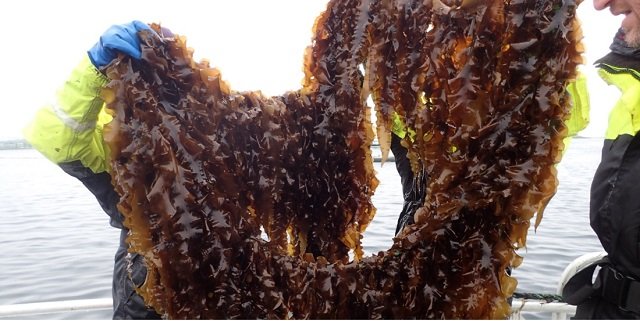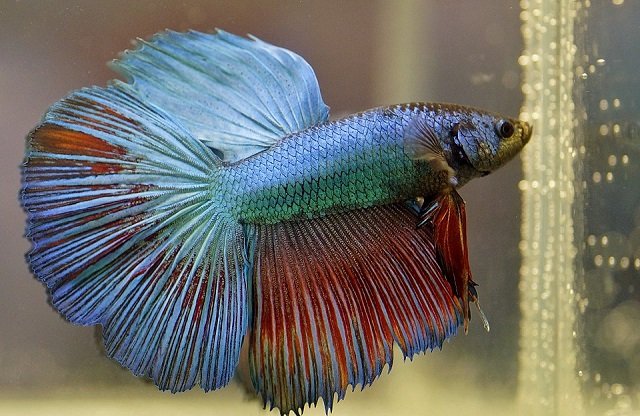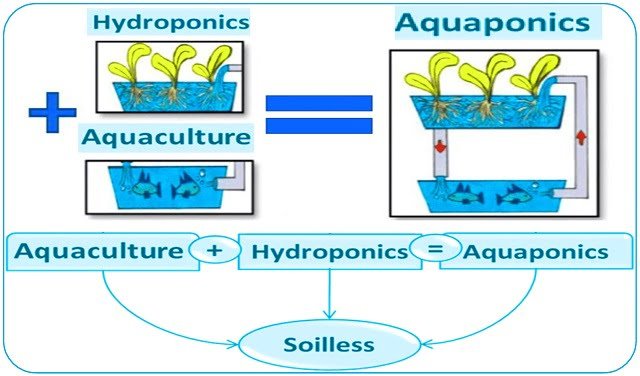
Fish and fish products are highly perishable due to their high water content, neutral pH, and abundant nutrients, making them susceptible to microbial spoilage and histamine formation.
Histamine, a biogenic amine produced by the bacterial decarboxylation of histidine, is a significant indicator of fish spoilage and can cause food poisoning.
A team of researchers from Brawijaya University and Universiti Malaysia Sabah published a scientific review analyzing a cost-effective solution using bioactive compounds derived from underexplored marine algae. The study published in the Italian Journal of Safety Food provides comprehensive information on the potential of different bioactive compounds derived from marine algae as inhibitors of histamine production, detailing their various applications in fish products.
Histamine formation in fish products
Several factors influence histamine production in fish, including temperature, pH, oxygen content, processing, packaging, and storage. While maintaining a cold chain is crucial, some bacteria can produce histamine even at temperatures below 5 °C. Several methods have been developed to control histamine in fish products, such as modified atmosphere packaging, high hydrostatic pressure, and irradiation, but these methods often require significant investments. In this sense, there is a need for a cost-effective solution to overcome this problem, which can be achieved through the use of bioactive compounds derived from underexplored marine algae.
Marine algae bioactive compounds as histamine inhibitors
Seaweed, a sustainable and cost-effective resource, offers a promising solution. Bioactive compounds derived from marine algae, such as flavonoids, alkaloids, terpenes, and phenolic acids, possess potent antibacterial properties. These compounds act through various mechanisms, including inhibiting DNA and RNA synthesis, altering cell membranes, and suppressing enzyme activity. The main bioactive compounds are:
- Flavonoids are effective antimicrobials due to their ability to hinder energy metabolism, prevent DNA and RNA synthesis, disrupt cytoplasmic membrane function and alter membrane permeability, in addition to suppressing histamine release from mast cells and histidine decarboxylase activity.
- Alkaloids can inhibit cell division, bind to bacterial enzymes to prevent respiration, disrupt cell membranes, and deactivate virulence genes.
- Tannins exhibit significant antimicrobial activity, mainly through their ability to form complexes with proteins, thereby inhibiting bacterial growth and protease activity.
- Phenolic acids inhibit microbial activity by interacting with the sulfhydryl groups of proteins, inhibiting the activity of enzymes crucial for the survival and proliferation of microbes.
Mechanism of action
Marine algae bioactive compounds act through multiple mechanisms to control histamine formation in fish products, both by their direct action on bacteria and by inhibiting the enzyme that produces histamine. It is important to consider that the effectiveness of these compounds may vary depending on their type, the concentration used, and the type of marine algae from which they are extracted. In addition, the choice of extraction solvent, such as methanol for brown algae and acetone for green algae, can influence the antimicrobial activity of the extracts.
Future trends and challenges
The trends and challenges in the use of bioactive compounds from marine algae to inhibit histamine in fish products can be summarized as follows:
Trends
- Development of antibacterials from marine algae: There is a growing trend in the research and development of bioactive compounds derived from marine algae as alternatives to synthetic preservatives. Marine algae are a sustainable, non-toxic, edible, and cost-effective resource, making them an excellent option to replace synthetic compounds.
- Focus on histidine decarboxylase inhibition: While inhibiting bacterial growth is a common approach, increasing attention is being paid to directly inhibiting the histidine decarboxylase enzyme, as this enzyme can remain active even after bacteria have been inactivated.
- Utilization of extracts and pure compounds: Bioactive compounds from marine algae can be used both in the form of crude extracts and in the form of pure compounds to inhibit histamine formation.
- Exploration of different types of marine algae: The effectiveness of different types of marine algae (such as brown and green algae) and their bioactive compounds to inhibit bacterial growth and enzyme activity is being investigated.
- Innovative extraction techniques: More efficient and cost-effective extraction techniques, such as ultrasound-assisted extraction, are being explored to overcome the limitations of traditional methods such as maceration. Ultrasound-assisted extraction reduces the reliance on organic solvents and can achieve high compound yields in less time.
- Application in different fish products: The goal is to apply the bioactive compounds in a variety of fish products, including fresh fish, fillets, and processed products, to control histamine formation throughout the supply chain.
- Understanding mechanisms of action: Work is being done to better understand the mechanisms of action of bioactive compounds, including inhibiting DNA and RNA synthesis, disrupting cell membranes, inhibiting enzyme activity, and interfering with histamine release.
Challenges
Stay Always Informed
Join our communities to instantly receive the most important news, reports, and analysis from the aquaculture industry.
- Limited research on histidine decarboxylase inhibition by marine algae: There is a limited amount of research on the use of bioactive compounds from marine algae to directly inhibit the activity of histidine decarboxylase. More research is needed to fully understand the potential of these compounds in this aspect.
- Standardization of extracts and compounds: It is necessary to standardize the extraction and purification processes of bioactive compounds to ensure consistency in antimicrobial activity.
- Effect on sensory properties: The concentration of bioactive compounds must be carefully evaluated since excessively high concentrations can negatively affect the sensory characteristics of fish products, such as taste and color. For example, some polyphenols in high concentrations can cause bitter or astringent flavors.
- Variability in the composition of marine algae: The composition of marine algae can vary depending on the species, geographic location, season, and environmental conditions, which can affect the composition and activity of bioactive compounds.
- Selection of extraction solvents: The choice of extraction solvent is important as some bioactive compounds are soluble in certain solvents but not in others. Methanol is a good solvent for extracting compounds from brown algae, while acetone is preferred for green algae.
- Scalability and economic viability: Methods that allow the large-scale production of bioactive compounds from marine algae in a cost-effective manner need to be developed.
- Need for in vivo studies: More in vivo studies are needed to assess the efficacy of bioactive compounds in inhibiting histamine under real storage and processing conditions of fish products.
- Overcoming conventional extraction methods: Conventional extraction methods such as maceration are limited, so research on methods such as ultrasound-assisted extraction is important. Although there is great potential in the use of bioactive compounds from marine algae to control histamine formation in fish products, there are still several important challenges that need to be addressed through research and development.
The trend is clear towards a wider use of natural resources for food preservation, but it is necessary to improve our knowledge on the action of bioactive compounds, standardize extraction methods, and ensure the safety and efficacy of these compounds in fish products.
Conclusion
Marine algae bioactive compounds offer a natural and effective solution to reduce histamine formation in fish and fish products. Their diverse antimicrobial mechanisms and their potential to inhibit histidine decarboxylase activity make them promising candidates for developing new conservation strategies. As research continues to explore the full potential of marine algae bioactives, we can expect to see wider applications in the seafood industry, which will ensure safer and higher quality fish products for consumers.
Reference (open access)
Maskur M, Prihanto AA, Firdaus M, et al. Review of the potential of bioactive compounds in seaweed to reduce histamine formation in fish and fish products. Ital J Food Saf doi:10.4081/ijfs.2025.12994
Editor at the digital magazine AquaHoy. He holds a degree in Aquaculture Biology from the National University of Santa (UNS) and a Master’s degree in Science and Innovation Management from the Polytechnic University of Valencia, with postgraduate diplomas in Business Innovation and Innovation Management. He possesses extensive experience in the aquaculture and fisheries sector, having led the Fisheries Innovation Unit of the National Program for Innovation in Fisheries and Aquaculture (PNIPA). He has served as a senior consultant in technology watch, an innovation project formulator and advisor, and a lecturer at UNS. He is a member of the Peruvian College of Biologists and was recognized by the World Aquaculture Society (WAS) in 2016 for his contribution to aquaculture.




